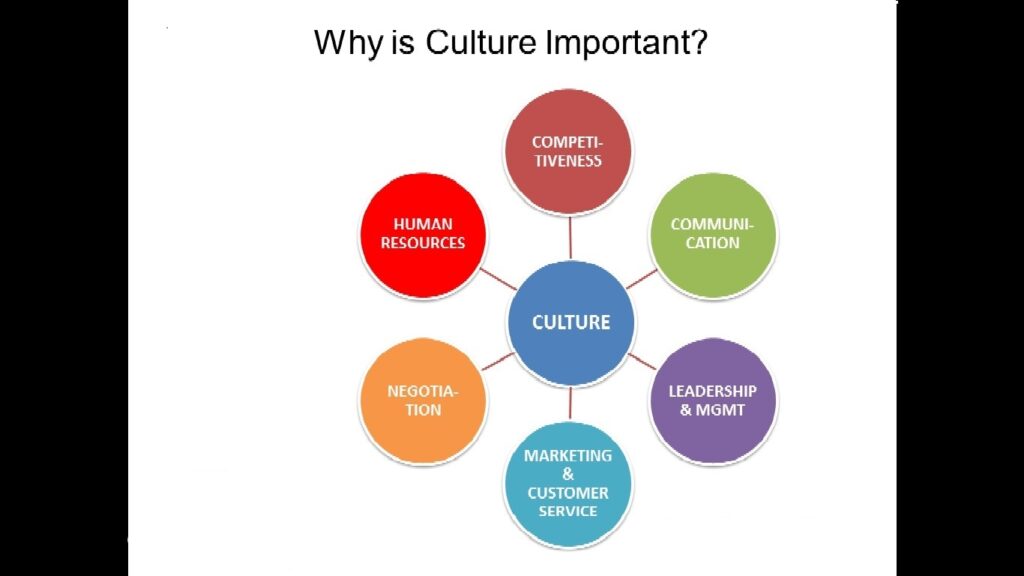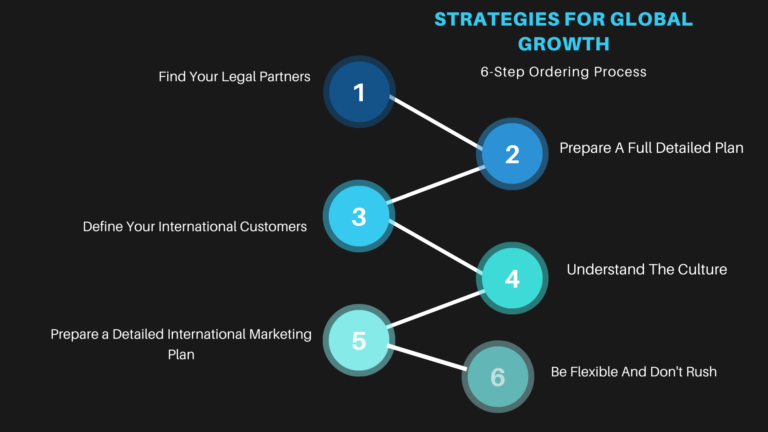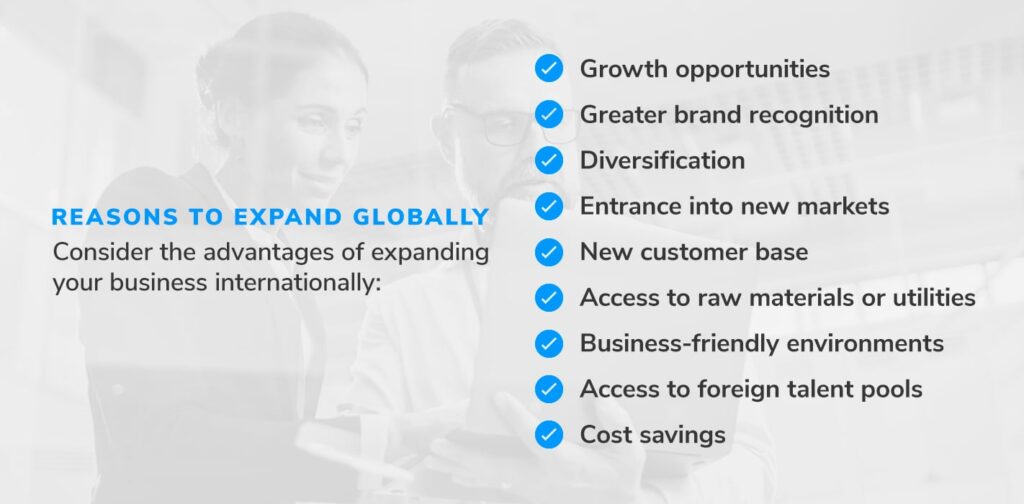Growing Sales in International Places


Let’s Talk The Truth
Let’s talk the truth about International Sales. While expanding your business into international markets can be an enticing prospect, it’s important to acknowledge the realities involved. International sales come with complexities, including navigating unfamiliar legal and regulatory frameworks, overcoming language and cultural barriers, and facing increased competition. Additionally, there are financial risks associated with currency fluctuations and potential payment issues. Operational challenges, such as adapting to different market demands and managing logistics across borders, also need to be considered. However, if approached strategically and with thorough planning, international sales can unlock new opportunities, diversify your business, and provide a competitive advantage in the global market.
Before starting foreign sales, it’s important to carefully weigh these pros and cons in light of your business’s unique situation, resources, and long-term goals. To minimize risks and get the most out of foreign growth, you need to do a lot of study and planning on the market.
Bringing You from Dreamland to Reality: The Pros and Cons of International Sales
Doing international sales as a local business can have both advantages and disadvantages. Here are some pros and cons to consider:
Pros
Expanding your sales internationally: enables you to access new markets and consumer segments that may be more receptive to your products or services. This can result in substantial development possibilities and increased revenue potential.
Diversification: Entering international markets can help diversify your business and reduce reliance on local or regional market conditions. This can provide stability and mitigate risks related to economic fluctuations or changes in consumer behavior in your domestic market.
By venturing into international sales: you may obtain a competitive edge over local rivals who have not investigated international markets. You can position your business as a global participant by offering distinctive products, competitive pricing, or superior customer service.
Scale economies: Selling to a larger customer base may result in scale economies, allowing you to reduce production costs, negotiate better deals with suppliers, and enhance overall efficiency. This can increase profits and competitiveness.
Innovation and education: entering international markets exposes you to new concepts, vantage points, and customer demands. It can inspire innovation and enhance products, processes, and business strategies. In addition, you can obtain insightful knowledge of global trends and best practices.
Cons
Increased complexity and costs: Selling abroad means figuring out complicated legal and regulatory frameworks, customs processes, shipping logistics, and compliance requirements. These problems can take a lot of time and money, which is especially hard on small businesses with few resources.
Language and cultural differences: To do business in foreign areas, you often have to get past language and cultural differences. To enter a market successfully, you must know the local traditions, tastes, and ways of doing business. Language hurdles can also make it hard to talk to people and help them.
Financial risks: When you sell internationally, the exchange rate between currencies can change, affecting how much money you make. Also, if you do business with people from other countries, you may have to deal with payment delays, non-payment, or other financial risks that come with doing business across lines.
Increased competition: When you expand into foreign markets, you have to deal with competition from both local businesses and businesses from other countries. You may face established competitors who know the market well and have a better brand name. This will make it harder for you to gain market share.
Difficulties with operations: When you sell abroad, you have to change your operations to meet the needs of each market. This could mean setting up delivery networks, keeping track of goods in different places, and arranging customer service in different time zones. Such complicated operations can strain your resources and make management harder.

The experience
Before embarking on international sales, it’s crucial to ensure that your business has a solid footing in your local market. To successfully internationalize your brand and products, you need to establish firm roots. This means having extensive experience in local sales, including managing returns, refunds, exchanges, and other customer service aspects.
Furthermore, a deep understanding of shipping logistics is essential, regardless of the type of packages you handle. You should have comprehensive knowledge of inventory management and, most importantly, a substantial customer base. Once you are confident in your expertise and preparedness to expand internationally, it’s time to take the next steps and begin your journey.
The adventure
Engaging in international sales presents thrilling new opportunities, especially for getting new clients. These individuals are no longer merely prospects; they become valued customers. However, let’s be honest: entering a global market doubles the required selling effort. It is similar to beginning from zero. You must become familiar with the regulations and requirements of each country, establish and manage a new team of employees, and implement effective marketing strategies to attract new consumers.
It is essential to remember that international sales require hard labor but can be accomplished, as innumerable others have demonstrated. The key to success is meticulous planning and the creation of effective strategies. By adhering to these principles, you will be able to navigate the obstacles and unleash the immense potential that international expansion offers. Therefore, embrace the expedition with resolve and let your organizational skills and strategic thinking lead you to global success.
Statistics
Statistics indicate that B2C (business-to-consumer) sales, specifically direct-to-consumer sales, are projected to rise to $629 billion, as reported by Forrester Research. Additionally, according to Statista, sales in Europe are expected to increase to approximately $338.1 billion. These figures highlight the substantial potential for revenue generation in international sales. The increasing number of countries with internet access has played a significant role in expanding opportunities for global sales. Advancements in technology and communication have effectively reduced the geographical distances between nations, making it more accessible for businesses to engage in international sales.

Strategies for Global Growth

The main thing is to have all the experience mentioned previously. Once you have that experience, the universe will be at your feet. Then, you must develop a detailed plan of all the steps to achieve international sales. Here are the basics of your plan:
Define your Ideal Customer
Identify all information based on target segmentations. You can find more detailed information in the article about customer persona. The most important thing about targeting is defining your ideal customer from an indefinite population. Furthermore, you can make more focused marketing campaigns by identifying your ideal clients. Thus, you can enter a new market with greater strength.
Identify customers from international countries who have been interested in your products. This process will give you a clearer view of the country or countries to identify ideal clients for global sales.
Collect Market Intelligence
Market Intelligence is the study of multiple sources of information. It means creating a more significant company idea with the elements that influence it, such as customers, competition, opportunities, and even problems. To a large extent, the basis of market intelligence is previous records already within the business, sales, problem-solving, and development opportunities, among others.
You should have enough information about the most popular products within your current clientele. In addition, you should also have statistics on the customer who visits vs. the customer who buys. Therefore, you can already discern the ideal client in that new country.
Also, it is necessary to research the population number of that ideal customer since you need a substantial number to enter the market. For example, if your ideal client only has a population of a thousand people in the country you are interested in, it is seriously not worth starting there.
Another fact is to find the economics of your ideal population in the country you want to sell internationally. This way, you will know the price to sell your products and if it is genuinely cost-efficient to sell to that new country.
Look for trends that occur in the country. This way, you will know if they are customers who can become loyal customers or not. The greater the number of trends that occur within a period, the greater the recurring expense you will incur in marketing to maintain and attract customers.
Look for other similar products. You have to be highly attentive to your competition.
Analyze how easily locals accept imported products. Many countries, for example, in Latin America, are highly regionalist; therefore, it is necessary to develop campaigns that attract the attention of locals.
Identify the way they shop. Their cultures, government, and income systems influence people from different countries. Pinpoint if your product or products could be in demand. So often, business owners get their hopes up about global sales, but it is noticeable that it is not convenient after conducting market research. So, on some occasions, the entry is postponed.
Determine consumer spending patterns in the market you wish to penetrate. Also, find out where the products they consume are from, local or imported.
Identify the barriers you may encounter. For example, in many countries, the government and the market can hinder the introduction of a new product. Therefore, to avoid this type of conflict, it is vital to have an accessible local legal team to assist you.
Sales Price Analysis
Price analysis is essential when entering a new market. Understand that you are trying to enter new markets by wanting to position yourself internationally. Each market acts independently since it is made up of different targets. In other words, buyers from North America may not be the same reaction as Europeans. Therefore, you must do a thorough analysis of any new market.
The price analysis process is the research method to define the right price in a new market. This process is done without identifying the specific costs or calculating the particular profit. Instead, it is simply a price comparison based on indicators already in the market.
Thus, having a new target market and a new competition environment, it is necessary to conduct a price analysis. This way, you have better control of the products’ performance to work in modifying the marketing strategies on the product’s life cycle.
The price analysis should include at least the following:
_the responsiveness of product price in a defined market
_ a competition analysis
_ the legal constraints
Therefore, to conduct a price analysis, it is vital to ask the following questions:
_What is the size of the market for purchasing the product?
_How great is the purchasing potential of the product in the new market?
_ What elements influence the product market, and what strategies are necessary to advance in the market?
_ How does the demand for the product match the prices?
_ How does a price change affect product acceptance?
_ How do the product’s features affect the cost?
_ What are the sales forecasts using different price alternatives?
_ How the price reflects the finances of the clients?
Once you have done your preliminary price analysis, it is necessary to conduct a price cost to have a vivid reality of the market penetration.
Legal Analysis of Regulations and Restrictions
A thorough analysis of regulations and restrictions is vital before starting any international procedure. In addition, entering into global sales brings other rules very different from the ones you use locally. Some of the most important elements to research before beginning any international sales process are:
- Free-trade agreements: These agreements are great for avoiding customs charges on certain products. You must identify if the product and the country have a treaty with the country where you are located. Of course, to take advantage of these agreements or treaties, you have to keep extensive records which equates to more work. However, you save a lot of money if you decide to sell between countries with such treaties. Plus, it saves the buyer money, which is attractive to other future customers. There are agreements with twenty (20) countries if you are in the United States. It would not be bad for you to investigate which of these agreements benefits you the most.
- Customs: all international shipments must pass through the revision of customs. The federal agency is in charge of reviewing that all shipments agree with federal standards. You can hire a broker to help you with this task. The broker will help you identify the paperwork and any duty to pay on arrival. Brokers usually work with large imports and export shipments, but they are also available for small businesses starting to make international sales. Brokers are not free, so expect to pay for their services.
You can also do it without the help of a broker. This way, you can save money by checking the regulations yourself. Check each of the leading shipping carriers:
FedEx
USPS
UPS
DHL
- Duties & Taxes: always check how duties and taxes increase the product’s price. Who will pay for the responsibilities, and how much are they? You must answer all those questions and know the response before shipping internationally. To learn more about duties and taxes, check Easyship, go to the middle of the country’s page you selected, and you will find a table with all the information.
Shipping and Return
You already should have experience with these processes. However, these processes must be even more critical; the cost of shipping and return increases for global sales. What are the essential aspects you need to take into consideration when shipping internationally:
- Costs: international shipping is more expensive than local shipping. You need to take control of the expenses and find carriers with excellent services and prices. Not all carriers charge the same, so take time to verify the prices.
- Delivery information: provide your customers with transparent and verifiable information. Keep them informed of the shipment process, and send any tracking number, code, and accurate delivery estimates. If the carrier is not delivering to the front door, specify where to collect the package.
- Return policy: you need to have a clear return policy. This means all customers must be able to see and read it before deciding. Your policy must state the regulations of return based on the country you’re shipping to. For example, shipping from the US to the UK, what are the rules that apply to the customer:
Number of days to make a return
Conditions of the item
Penalties and Fees that can be applied
Acceptance of Store Credits
Any other regulation that alters the return
International Payments
International payments may incur currency exchange fees, so you need to research payment providers that best suit your business when selling internationally. Each payment provider will have its own set of rules, so it is a great idea to contact their site to get acquainted with them; when deciding which payment method is the best, always remember to consider clients. If you select a payment method unknown in a country, you will have a hard time convincing people to use it. On the contrary, if you use a well-known payment method, your clients will not hesitate the purchase. So what do you need to do?
- Research for preferred payment methods: each country has its preferred payment methods, so contact them to affiliate with their bank or service.
- Make security your priority: nowadays, cyberattacks are the norm, so avoid falling into the trap and find a reliable method. Furthermore, you must oversee protecting your client’s information, so deciding on a secure and dependable method is necessary.
TIPS

Ship using a Third-Party Service
Shipping is becoming more expensive every year. Unfortunately, there is no stop to the increases in shipping prices. Another solution instead of using top-known carriers like UPS, FedEx, USPS, or DHL is private third-party services.
These third-party services specialize in international shipping, making it, in some instances, more inexpensive. Check these companies:
- Companies with a Service Address: these companies let you send your packages to a service address. The service provider then forwards the shipments to the international destination. They take care of all the documentation, fees, and delivery. It is an excellent service if you are starting in the global market. Some examples of these companies are Bongo International, GetMyUSMail, Shipito,
- SHIP2ME, and MyUS.com.
- Companies with Consolidation Services: the third party collects the packages, consolidate them, and send them to the final destination, reducing the price of shipping.

Use a Third-Party Fulfillment Service
A third-party logistics or 3PL is an excellent service you can consider when starting global sales. Always get informed directly through the company you decide to use about main points like pallet price, shipping time, and regulations. Ask them to send you their locations and details about the shipping process..

Implement a Global Solution
A global solution is more expensive because you must implement a more complex service. In addition, you will have to manage several locations, which will incur a significant expense initially but an excellent and cost-effective in the long run. This process is great if you are making millions in revenue. More oversized retail use products like Oracle ATG or IBM’s WebSphere Commerce packing for this type of process.

Set Up International Shipping
If you feel uncomfortable using previous solutions, tailor your shipping options. Selecting specific geographical areas or zones is the most efficient process to tailor your shipping options. You can control the product’s final price by doing this because you already know the shipping rates. In addition, you can use specific tactics to manage shipping zones:
- Provide different shipping delivery speeds.
- Provide accurate prices of shipping per carrier.
- You can adjust the product price and balance the shipping price; for example, if the shipping price is $30.00, you can add part of the price to the product and charge the rest on shipping. Instead of selling a product for $19.99, now it will be $39.99 and $10.00 international shipping. It will look more attractive to clients.
- Use shipping profiles for heavy packages: this process helps you standardize the shipping rates for similar items.
Blogs
8 Steps You Should Take Before Expanding Your Business Abroad
In today’s interconnected global economy, businesses of all sizes are expanding their operations beyond national borders and investigating new horizons. International expansion has become a compelling option for businesses seeking to penetrate new markets, expand their customer base, and achieve sustainable growth. The appeal of international expansion resides in the potential for increased revenue, brand recognition, and access to diverse talent pools, regardless of whether a company is entering emerging economies or established markets. However, international expansion is not without obstacles. To navigate the complexities of diverse business environments requires meticulous planning, market research, cultural adaptation, and a strategic approach. Understanding the complexities and dynamics of international expansion is crucial for businesses seeking to prosper in a swiftly changing marketplace in this era of expanding global connectivity.
Need Help, then Send Us an S.O.S.!
Get Your Competitive Analysis Easy Form
Please check your junk mail if not found in the inbox. Thanks!

